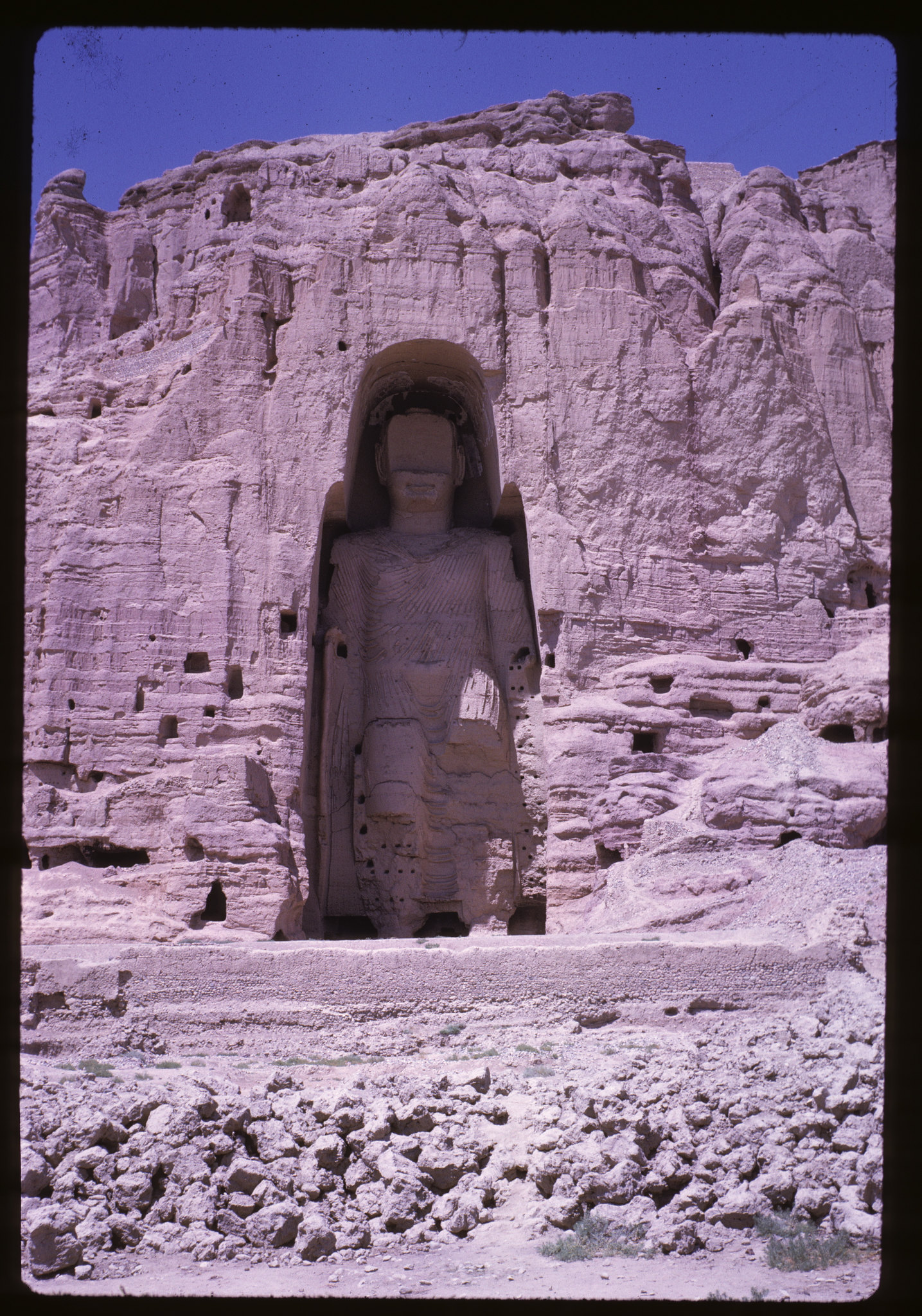 The Bamian Valley, south of Kabul, and one of our favorite places anywhere, has long been noted for its statues of the Buddha and numerous niches and caves pertaining to the statues. The walls of the excavations are covered with “wall paintings and stucco decorations” (305).
The Bamian Valley, south of Kabul, and one of our favorite places anywhere, has long been noted for its statues of the Buddha and numerous niches and caves pertaining to the statues. The walls of the excavations are covered with “wall paintings and stucco decorations” (305).It has been observed that “the form of the Buddhas in Bamian valley is an Orientalized version of the Greek god Apollo” (p. xviii). Many of these works of art and craft were destroyed by the Taliban in the first part of this century.
It is believed that monumental Buddha sculptures were carved into the cliffs of Bamiyan between the 3rd to 6th centuries AD, while in the cave complex in the east, including the 38 meter Buddha, a stupa was built in the 3rd or 4th century A.D.
Monks at the monasteries lived as hermits in small caves carved into the side of the cliffs. Most of these monks embellished their caves with religious statuary and elaborate, brightly colored frescoes. (http://whc.unesco.org/uploads/nominations/208rev.pdf).
In The Road to Oxiana (1937, rev. 1966), Robert Byron expresses a negative assessment of the Bamian Buddhas. Byron’s comments are contrary to the usual view of those statues, but I find it an interesting note in a fascinating book.
It was in Gandhara, in the early centuries A.D., that “artists portrayed the Buddha in human form for the first time” (296). As Wikipedia notes, Gandhara included parts of Pakistan “as well as the Jalalabad district of northeastern Afghanistan.
See my photos here